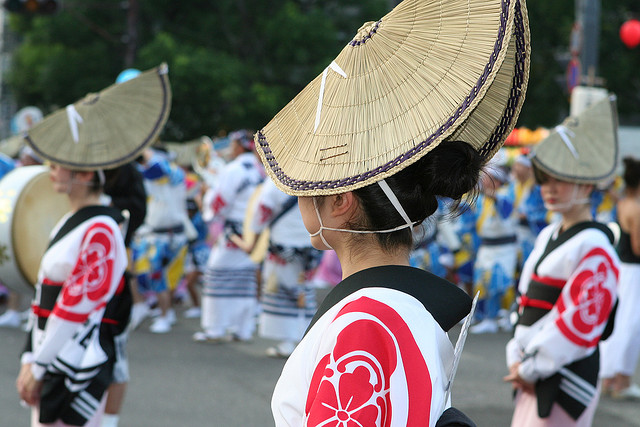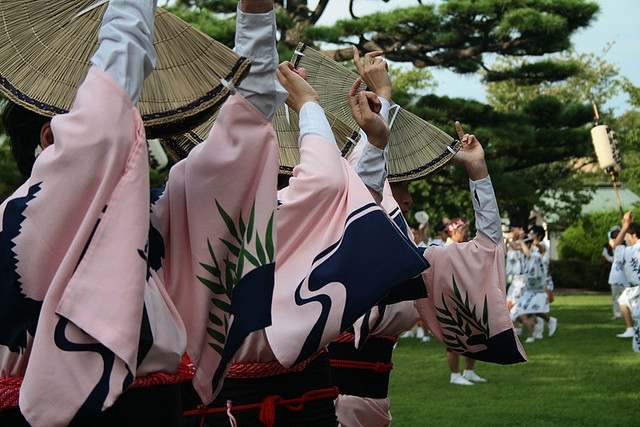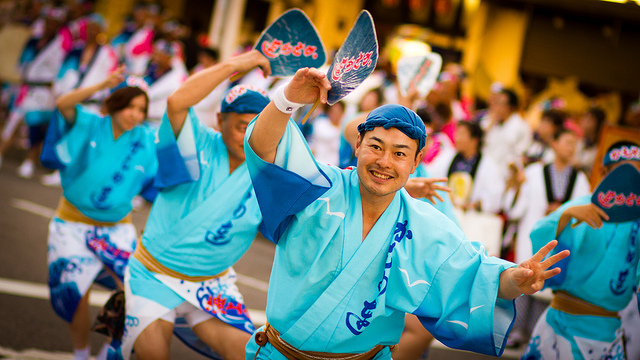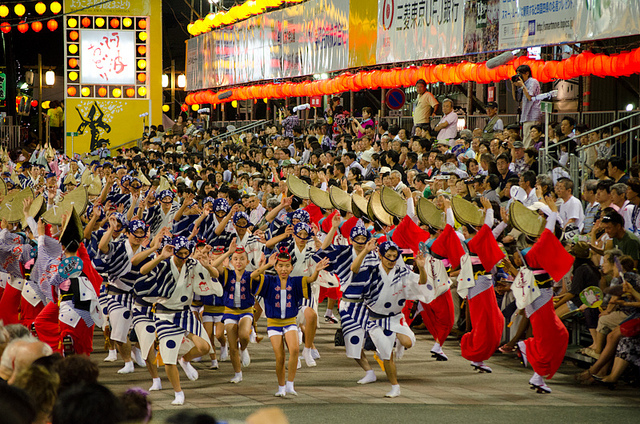
Awa Odori performers (photo: debug @flickr.com/photos/dja)
Awa is the old name for the area of Shikoku Island now called Tokushima Prefecture, and odori means “to dance.” The Awa Odori 阿波踊り dance festival is the largest in Japan, with origins as far back as the 16th century. The exact beginning is unknown, but it is performed from August 12 through 15 and is related to the Obon dances, those celebrating the festival of the dead. A casual name for the style is “Fools Dance,” and there are indications throughout history that it was frequently a drunken revelry with brawls and behavior. These inspired restrictions in different eras such as prohibiting dancers from wearing swords or knives and performing after midnight. The term “Awa Odori” was not used until the 20th century.

Awa Odori troupe (photo: flickr.com/photos/asiaticleague)
Men and women have distinct dancing styles, but they perform in the same troupe called a ren (連) to the same music. Some teams practice throughout the year, but others are assembled shortly before the festival. Many of the teams are sponsored by companies and have recognizable logos on their costumes. The live music includes taiko drums, gongs, flutes, and other instruments. The formal venues attract the most notable performers.

Awa Odori troupe (photo: flickr.com/photos/foonar)
Women dancers wear traditional costumes including a large hat called a kasa (傘). They wear sandals called geta (下駄) and spend most of the time dancing with their hands in the air and their heals off the ground. Men dancers wear socks called tabi (足袋) and dance more acrobatically, often maintaining a low stance for long periods of time.
Today the festival draws tens of thousands of visitors, so book a hotel early if you plan to stay in Tokushima. There are 7 official stage areas on blocked-off streets downtown, but troupes often perform elsewhere in the streets. The stages have reserved seating which ranges from 800 to 2000 yen for a 2-hour block, and tickets can be purchased from the Tourist Information Center in Tokushima Station. The main events run from 6 to 10:30 pm, but there are activities throughout the day. Food stalls are set up in several areas.

Awa Odori troupe (photo: flickr.com/photos/jose-cruz)
The venues are all walking distance from Tokushima Station. Because the festival is crowded with visitors from around the world, it is advisable to use common sense about carrying valuables and other personal safety.
If you can not attend the festival, there is an excellent museum open year-round in central Tokushima at the base of Mt. Bizen. It is an excellent addition to any visit to the city. For more information about the Awa Odori: http://www.pref.tokushima.jp/english/attraction/culture/